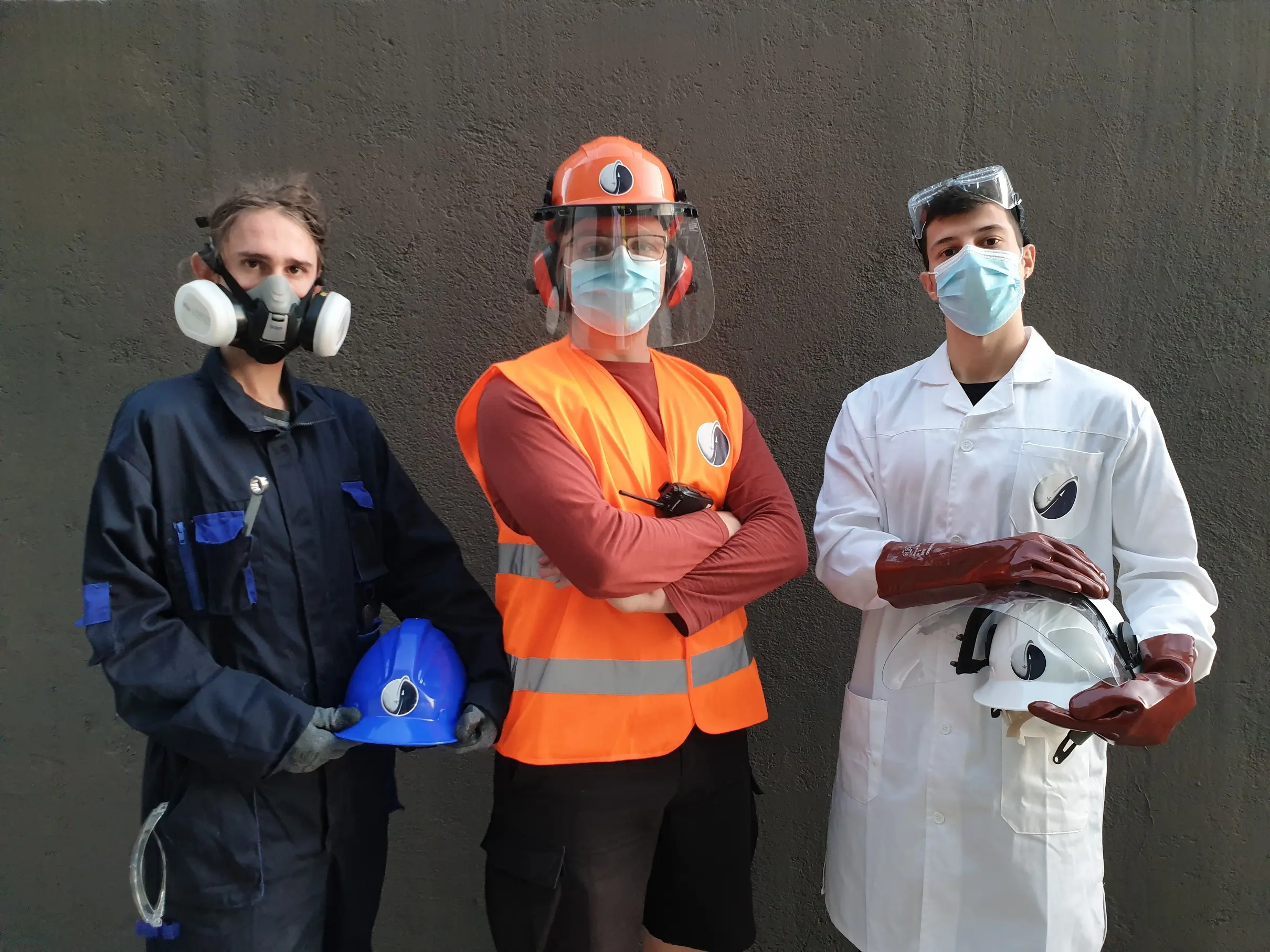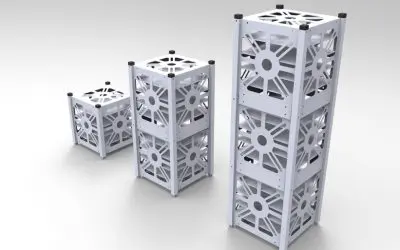Most high-power rockets need two parachutes for their recovery. The first one is called drogue parachute and it produces the initial deceleration, whereas the second one, the main parachute, helps the rocket achieve its desired ground-hit velocity.
Before designing the parachutes, specific research needs to be conducted to select the right materials, the fabric (ripstop nylon), the thread (nylon) and the paracords (nylon).
The main process for the design and manufacturing of a parachute begins with the calculation of its Diameter (D) and its Drag Coefficient (CD). It is also necessary to know the exact mass (m) of the rocket after the engine’s fuel has burned out. Moreover, for the Drogue parachute we need to know the speed of the rocket (V) the moment it is deployed, while for the main parachute the rocket’s desired ground-hit velocity. These parameters can be easily computed with the help of Open Rocket, a flight simulation program. The diameter of the parachute can be calculated with the help of specific bibliography.
Next is the design of 8 and 12 identical pieces (for the Drogue and Main parachutes correspondingly) in the shape of equilateral triangles, which are called gores. These pieces are cut using a pattern, which is designed using specific equations and manufactured with the help of a laser-cut. The pieces are then hemmed with a sewing machine and sewed together, using a specific type of sewing (zig-zag).
Then a center hole is made with a radius that is 20% of the parachute’s radius and makes the rocket more stable. Then, the number of cords that is sewed on the fabric, is equal to the number of gores, and they have a length that is 1.15 times the parachute’s diameter.
This year the recovery subsystem has developed the toroidal geometry for the parachutes. The decision of selecting this design rested on the fact that they produce the highest Drag Coefficient value (up to 2.2) which can result in using a size smaller chute for the same load capacity, wherefore smaller diameter parachutes can provide the same descent rate.
In our previous rocket design, the ejection was achieved with Black Powder charge. In the current rocket, the team decided to move to a different ejection method and utilize a CO2 based deployment system. This decision largely rested on the fact that CO2 is a better candidate for deployment methods as its separation offers increased safety compared to black powder charges. Unlike black powder, CO2 separation is clean, meaning that there is no flame or residue that gets pushed into the body of the rocket and onto its components. This removes the need for flame-retardant cloths to protect the interior components, such as parachutes, from high temperature flames.
The recovery subsystem has designed and manufactured a SRAD ejection mechanism which uses CO2 cartridges. When the on-board altimeters detect that apogee has been reached, the flight computer sends a signal to the mechanism and the gas is released inside the rocket with the help of Black Powder. The charge cup that contains the Black Powder fits on a compression spring, which has a pin on the other side of it that punctures the cartridge. The expanding CO2 gas creates pressure inside the upper tube, pushing the payload vessel and parachute off the rocket. The procedure towards designing the mechanism requires knowing exactly how big the recovery bay is, as well as the weight of the nosecone. Then, the dimensions of the casing, the four holes, as well as the approximate amount of CO2 needed for the ejection mechanism to work, are calculated with equations.
The second mechanism is called tender descender and it deploys the main parachute at the right moment. It consists of two metal parts, one of which is tied to the drogue parachute and the main parachute’s case, whereas the other one is tied to the rocket. These two parts fit together and create a space to place a small amount of BP, which, again, is connected to two wires that are also connected with the electronics’ bay of the rocket. When the signal to burn the Black Powder is given from the electronics’ bay, the two parts of the tender descender mechanism are divided. Consequently, the drogue parachute draws the main parachute’s case, thus deploying the main parachute.
After the design and manufacturing of both mechanisms, many experiments are needed, in order to make sure that they work properly, as well as decide on the perfect amount of BP.
Future
The main goal of the Recovery sub-system is the safe recovery of the rocket. That’s why its members’ duty is to design and manufacture proper parachutes, as well as capable mechanisms that operate correctly at the desired moment. Hence, the team designs an alternative ejection mechanism that will utilize CO2 cartridges, and the expanding gases will be released with the help of a solenoid valve. Concerning the parachutes, the reefing implementation will be used for dual deployment, allowing the parachute canopy to increase the inflated diameter once the central cord is cut.




